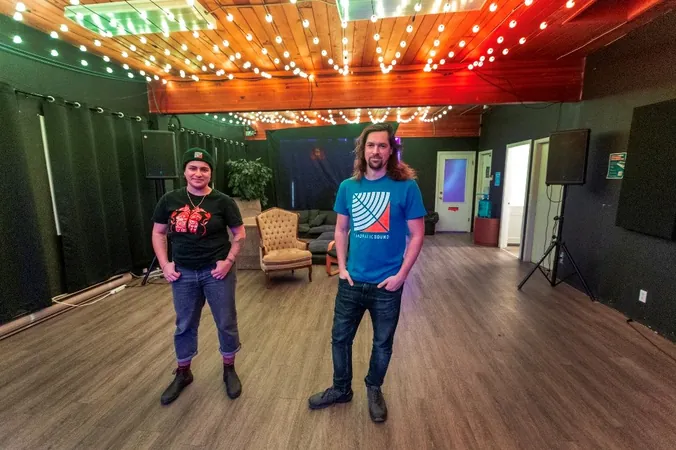
Breakthrough in Smart Textiles: How Laser-Induced Graphene Could Revolutionize Space Gear!
2024-11-03
Author: Benjamin
Breakthrough in Smart Textiles: How Laser-Induced Graphene Could Revolutionize Space Gear!
In a groundbreaking study, researchers from the Korea Advanced Institute of Science and Technology (KAIST), along with teams from the Korea Institute of Machinery & Materials and Seoul National University of Science and Technology (SEOULTECH), have unveiled a revolutionary process that utilizes laser-induced graphene (LIG). This innovative technology promises to enhance the capabilities of smart spacesuits and telescopes, paving the way for safer and more efficient space exploration.
The innovative manufacturing method employs femtosecond laser pulses to convert ordinary Kevlar fabric into a multifunctional material capable of advanced temperature and strain sensing, light absorption, and heat management. With space conditions often being harsh and unforgiving, this new approach could significantly improve equipment durability and performance.
At the heart of this development lies a unique microscopic structure; the laser treatment creates a network of graphene that resembles a dense forest filled with minute pores and channels. This configuration allows the material to absorb an astounding 97.57% of incoming light, far surpassing traditional black coatings used in space telescopes. Furthermore, the material possesses exceptional thermal conductivity, allowing heat to dissipate six times faster than conventional telescope materials. This is a game-changer, as it prevents light interference and temperature fluctuations that can compromise image quality in telescopes.
The potential of this material extends beyond just light management; it serves as a highly sensitive sensor as well. It can detect temperature changes with three times more sensitivity than current sensors used in space suits. Remarkably, it also boasts an electrical response to physical movement that is 454 times better than traditional strain sensors. This level of responsiveness enables real-time monitoring of an astronaut's movements and vital signs, all without the need for cumbersome electronics.
One of the significant advantages of this breakthrough is its straightforward integration into existing space systems. By working with Kevlar—a material already standard in space gear—the process enhances the utility of the equipment, enabling a seamless transition to this advanced technology. The team's controlled laser technique allows for the creation of specific patterns, which can be tailored for different applications, whether health monitoring or stray light absorption.
Rigorous testing has validated the material's robustness under simulated space conditions. Samples were subjected to a vacuum matching low Earth orbit environments for 40 hours, experiencing extreme temperature fluctuations from -20 to 60 degrees Celsius. Impressively, the material retained its sensing and optical properties throughout these stress tests.
Looking ahead, this single material has the potential to replace a host of specialized systems in space equipment. Modified Kevlar suits could transform astronaut health monitoring, while telescopes could achieve unprecedented clarity, eliminating the need for multiple systems to control temperature and stray light.
However, before the new material is deployed in actual space missions, further testing is essential. Challenges such as radiation exposure and transitioning the manufacturing process from laboratory to mass production still lie ahead. The researchers are committed to ensuring long-term stability and developing automated manufacturing techniques for large-scale output.
This groundbreaking technique highlights a transformative approach to advanced materials in aerospace engineering. By consolidating multiple functions into a single platform, it could drive significant innovation in the design of future spacesuits and equipment for unparalleled exploration opportunities. Stay tuned—this could very well be the future of space gear!









 Brasil (PT)
Brasil (PT)
 Canada (EN)
Canada (EN)
 Chile (ES)
Chile (ES)
 España (ES)
España (ES)
 France (FR)
France (FR)
 Hong Kong (EN)
Hong Kong (EN)
 Italia (IT)
Italia (IT)
 日本 (JA)
日本 (JA)
 Magyarország (HU)
Magyarország (HU)
 Norge (NO)
Norge (NO)
 Polska (PL)
Polska (PL)
 Schweiz (DE)
Schweiz (DE)
 Singapore (EN)
Singapore (EN)
 Sverige (SV)
Sverige (SV)
 Suomi (FI)
Suomi (FI)
 Türkiye (TR)
Türkiye (TR)